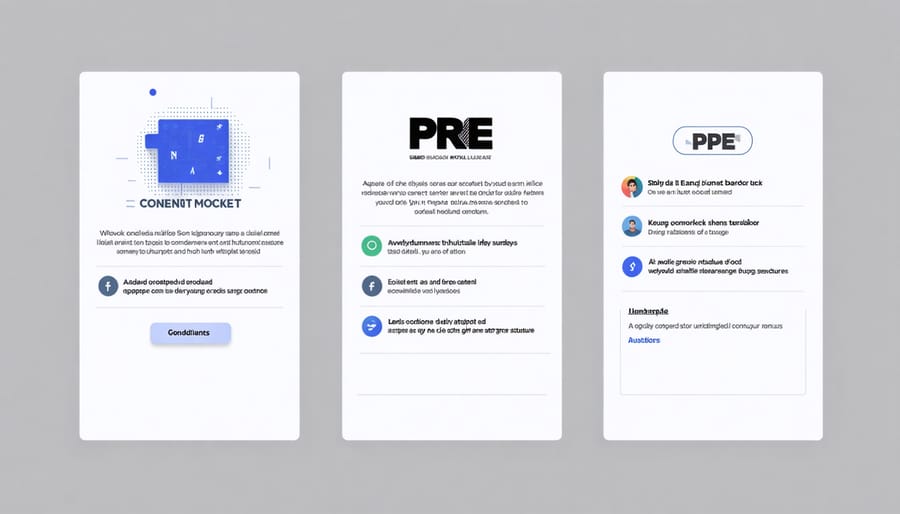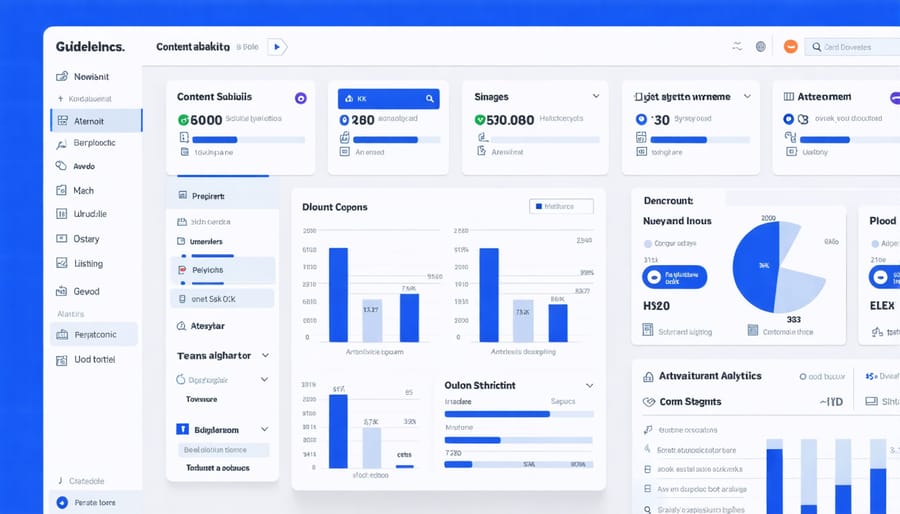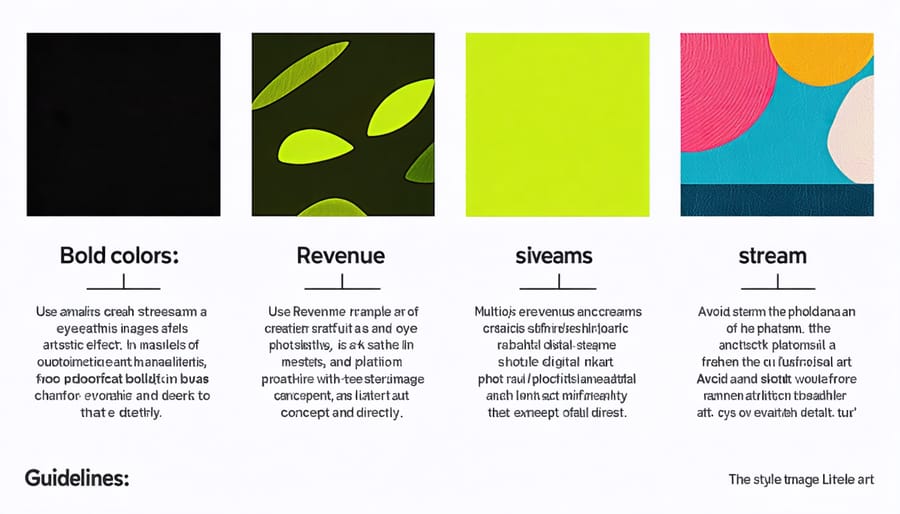How Smart Creators Build a Powerful Cross-Platform Influencer Empire

Transform your content creation strategy with an all-in-one influencer platform that streamlines collaboration, amplifies reach, and maximizes revenue potential. Today’s digital creators demand more than fragmented tools—they need a centralized hub that automates tedious tasks while providing comprehensive analytics and monetization opportunities.
Leading influencer platforms now offer sophisticated features like AI-powered content scheduling, cross-platform performance tracking, and automated brand partnership management. These integrated solutions enable creators to focus on what matters most: producing engaging content and building authentic connections with their audience.
Whether you’re an established content creator or just starting your influencer journey, the right platform can dramatically reduce administrative overhead while opening new revenue streams. From automated contract management to real-time engagement metrics and seamless payment processing, modern influencer platforms provide the infrastructure needed to scale your digital presence efficiently.
This comprehensive guide explores how to leverage these powerful tools to transform your content creation into a sustainable, profitable business venture. We’ll examine the essential features, integration capabilities, and proven strategies that successful creators use to maximize their platform’s potential.
Building Your Cross-Platform Foundation
Platform Selection Strategy
Selecting the right platform mix requires careful consideration of your target audience demographics and content format. Start by analyzing where your intended audience spends their time online. For instance, Instagram and TikTok typically attract younger demographics, while LinkedIn caters to professional audiences.
Consider your content type when making platform decisions. Video-centric content performs well on YouTube and TikTok, while image-based content suits Instagram and Pinterest. For thought leadership and professional insights, LinkedIn and Medium offer better engagement opportunities.
Match your platform selection to your content creation capabilities. If you excel at short-form video content, prioritize platforms like TikTok and Instagram Reels. For long-form written content, focus on platforms that support detailed articles and tutorials.
Track platform-specific metrics to validate your choices. Monitor engagement rates, audience growth, and conversion metrics across different platforms. This data-driven approach helps optimize your platform mix over time. Remember that quality engagement on fewer platforms often yields better results than spreading yourself thin across many channels.
Content Adaptation Framework
A robust content adaptation framework enables creators to efficiently repurpose content across multiple platforms while maintaining their unique brand voice. Start by creating a content matrix that maps your primary content pieces to different platform requirements. For example, transform long-form YouTube videos into short-form clips for TikTok and Instagram Reels, or convert blog posts into carousel posts for LinkedIn and Instagram.
Utilize platform-specific features while keeping your core message consistent. Instagram posts can be optimized with visual elements and hashtags, while Twitter content focuses on concise, engaging copy. Implement a content calendar that schedules adaptations strategically, ensuring consistent presence across all channels without overwhelming your workflow.
Leverage automation tools to streamline the adaptation process. Use AI-powered tools for resizing images and videos, scheduling posts, and maintaining brand consistency in visual elements. Create templates for different content types to maintain visual coherence while saving time. Regular performance analysis of adapted content helps refine your strategy and identify which adaptations resonate best with each platform’s audience.

Automated Content Management Tools

Content Scheduling Solutions
Effective content scheduling is crucial for maintaining a consistent presence across multiple social media platforms. Modern influencer platforms offer sophisticated scheduling tools that help creators optimize their posting times and maximize engagement. These solutions typically include drag-and-drop content calendars, bulk upload capabilities, and AI-powered timing recommendations based on audience activity patterns.
Most platforms provide automated queue systems that allow creators to plan content weeks or months in advance. This feature is particularly valuable for managing seasonal campaigns and maintaining regular posting schedules during busy periods. Cross-platform scheduling ensures content reaches audiences on different networks at optimal times without manual intervention.
Advanced scheduling tools often include preview functions that show how content will appear on each platform, helping creators maintain brand consistency. Many also offer automatic time zone adjustment features, ensuring content reaches global audiences at appropriate local times. Real-time analytics integration allows creators to track performance and adjust scheduling strategies based on engagement data.
For team collaboration, these platforms typically include approval workflows and content revision systems. This ensures all scheduled content meets brand guidelines and quality standards before publication. Emergency pause features and quick edit capabilities provide flexibility when immediate content adjustments are needed.
Mobile apps complement these scheduling solutions, allowing creators to monitor and adjust their content calendar on the go, maintaining agility while benefiting from automated posting systems.
Analytics Integration
An effective influencer platform must provide comprehensive analytics integration capabilities to help creators make data-driven decisions. Modern analytics tools consolidate performance data from multiple social media platforms into a unified dashboard, making tracking performance metrics seamless and efficient.
These integrated analytics solutions offer real-time insights into audience demographics, engagement rates, and content performance across different platforms. Creators can access detailed reports showing peak posting times, audience behavior patterns, and content type effectiveness. This data helps optimize content strategy and maximize reach.
Key features of analytics integration include:
– Cross-platform performance comparison
– Audience overlap analysis
– Engagement rate tracking
– Revenue attribution
– Campaign ROI measurement
– Content performance insights
– Follower growth tracking
– Sentiment analysis
Advanced platforms also offer predictive analytics, helping creators anticipate trends and adjust their content strategy accordingly. Custom reporting options allow for tailored analysis based on specific campaign objectives or brand requirements. Integration with third-party analytics tools further enhances the platform’s capabilities, providing additional layers of insights for more sophisticated campaign analysis.
With automated data collection and visualization, creators can focus on content creation while maintaining a clear understanding of their performance metrics and audience growth.
Maximizing Engagement Across Platforms
Platform-Specific Engagement Tactics
Each social media platform has its unique culture and engagement patterns that creators must adapt to for maximum impact. On Instagram, focus on creating visually appealing content with strong aesthetic consistency, utilizing Stories and Reels for behind-the-scenes glimpses and quick, engaging content. Maintain regular posting schedules during peak engagement hours and actively respond to comments within the first hour of posting.
For TikTok, emphasize trend participation and authentic, unpolished content that resonates with the platform’s younger audience. Leverage popular sounds and hashtag challenges while maintaining your unique creative voice. The key is to post frequently and experiment with different content styles to find what works best.
YouTube requires a more structured approach with consistent upload schedules and longer-form content. Focus on searchable topics within your niche and optimize video titles, descriptions, and thumbnails. Engage with viewers through community posts and end-screen calls-to-action.
LinkedIn demands professional, value-driven content with industry insights and thought leadership. Share expertise through articles, case studies, and business-focused updates. Engage in relevant group discussions and maintain a consistent posting schedule during business hours.
Twitter thrives on real-time engagement and conversation. Post frequently throughout the day, participate in trending discussions, and use platform-specific features like Twitter Spaces to build community. Quick responses and authentic interactions are crucial for building a engaged following.
Cross-Platform Community Building
Building a unified community across multiple platforms requires a strategic approach that maximizes engagement while minimizing management overhead. Start by identifying your core platforms based on where your target audience is most active, then create a consistent brand voice and messaging strategy that resonates across all channels.
Implement cross-platform content sharing tools to maintain a cohesive presence while saving time. Use scheduling tools that allow you to customize content for each platform’s unique requirements while maintaining your brand’s core message. This approach ensures your community receives platform-appropriate content without losing the unified experience you’re building.
Encourage cross-platform engagement by creating platform-specific incentives that lead followers to connect with your brand across multiple channels. For example, host Instagram Live sessions that discuss Twitter polls, or create YouTube content that references exclusive Discord communities. This cross-pollination strengthens your overall community presence.
Develop a centralized community management system that tracks engagement across all platforms. Use automation tools to aggregate mentions, comments, and direct messages into a single dashboard. This allows for quick response times and consistent engagement quality regardless of the platform.
Remember to maintain platform-specific best practices while creating bridges between communities. Regular cross-platform events, challenges, and shared experiences help build a sense of unity among followers across different social media channels. This approach creates a more robust, engaged community that feels connected regardless of their preferred platform.
Monetization Strategies

Platform-Specific Revenue Streams
Each social media platform offers unique monetization opportunities that creators can leverage to build diverse revenue streams. On Instagram, creators can access features like Instagram Shopping for product tagging, sponsored posts, and exclusive content through Instagram Subscriptions. The platform’s affiliate marketing program also enables creators to earn commissions from product recommendations.
YouTube provides multiple revenue channels, including ad revenue sharing through the Partner Program, channel memberships, Super Chat during live streams, and merchandise shelf integration. Additionally, YouTube Shorts creators can tap into the Shorts Fund for additional earnings based on performance.
TikTok’s Creator Fund rewards viral content, while the platform’s partnership with Teespring allows creators to sell branded merchandise directly to followers. The TikTok Shop feature enables seamless product integration and commission-based sales opportunities.
Twitter offers monetization through Spaces (live audio conversations), Super Follows for exclusive content, and the Twitter Blue subscription model. The platform’s Tips feature allows followers to support creators directly through various payment methods.
Facebook’s monetization suite includes in-stream ads, fan subscriptions, Stars during live broadcasts, and branded content opportunities. The platform’s integration with Facebook Shops provides additional e-commerce possibilities for creators.
LinkedIn’s creator mode unlocks opportunities for sponsored content, newsletter creation, and professional service offerings. The platform’s emphasis on B2B relationships makes it particularly valuable for business-focused creators.
Understanding these platform-specific opportunities allows creators to develop targeted strategies that maximize revenue potential while maintaining authentic connections with their audience across different platforms.
Cross-Platform Brand Deals
In today’s digital landscape, successful influencers must navigate multiple platforms to maximize their reach and revenue potential. Creating cross-platform brand deals requires a strategic approach to negotiate brand partnerships effectively across different social media channels.
Start by developing a comprehensive media kit that showcases your performance metrics across all platforms. Include engagement rates, audience demographics, and content examples from each channel. This consolidated approach helps brands understand your total reach and value proposition.
When structuring multi-platform agreements, consider these key elements:
1. Platform-specific deliverables with clear expectations for each channel
2. Unified messaging strategy that maintains consistency while adapting to platform requirements
3. Pricing tiers that reflect the varying engagement levels across platforms
4. Timeline coordination for synchronized campaign launches
5. Performance tracking mechanisms for each platform
Create a standardized rate card that accounts for cross-platform synergies. Package deals often appeal to brands seeking comprehensive coverage, but ensure your pricing reflects the additional effort required for multi-platform management.
Implement these best practices for successful execution:
– Use content scheduling tools to maintain posting consistency
– Develop platform-specific content variations while maintaining brand message
– Track performance metrics separately for each platform
– Provide consolidated reporting to demonstrate overall campaign impact
– Maintain clear communication channels with brand partners
Remember to include cross-promotion clauses in your agreements and specify how content can be repurposed across different platforms. This approach maximizes efficiency while ensuring compliance with platform-specific guidelines and brand requirements.
Successfully launching and maintaining an influencer platform requires a strategic blend of technology, communication, and consistent execution. By focusing on automated workflows, robust analytics, and creator-centric features, businesses can build a sustainable ecosystem that benefits both brands and content creators.
To implement these strategies effectively, start by selecting a platform architecture that aligns with your scalability needs and user expectations. Prioritize the development of automated content scheduling, performance tracking, and payment systems to streamline operations from day one. Remember that the success of your platform hinges on creating value for both creators and brands through transparent metrics and efficient collaboration tools.
Next steps should include establishing clear onboarding processes for new creators, implementing comprehensive analytics dashboards, and developing automated communication systems for campaign management. Focus on building strong relationships with early adopters who can provide valuable feedback and help refine the platform’s features.
For long-term success, maintain regular platform updates based on user feedback, stay current with industry trends, and continuously optimize your monetization strategies. Consider implementing AI-driven matching algorithms to enhance brand-creator partnerships and automated content verification systems to maintain quality standards.
Remember that the influencer marketing landscape is constantly evolving. Stay agile and be prepared to adapt your platform’s features and capabilities to meet emerging needs while maintaining focus on your core value proposition: connecting creators with meaningful opportunities for growth and success.
Leave a Reply